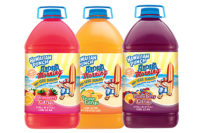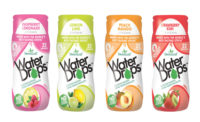In recent years the United States soft drink market has seen beverages sweetened with a single sweetener supplanted by those using a multi-sweetener blend. Contrary to most other markets worldwide, the United States has historically been a single sweetener market — products have either been 100 percent sweetened with sugar or high fructose corn syrup (HFCS) or 100 percent sweetened with a single high potency sweetener, such as aspartame.
In 2010, 10 of the top 15 carbonated diet soft drinks were sweetened with more than one high potency sweetener. As we move forward, sweetener blending will not simply stop there; high potency sweeteners are no longer just for diet products.
Blends in context
The Centers for Disease Control (CDC) estimates that more than one third of U.S. adults, or approximately 72 million people, are obese, which is equivalent to a body mass index of more than 30. Furthermore, at least 17 percent of U.S. children are now obese. In 2008, obesity-related health care costs totaled an estimated $147 billion. Fortunately, a recently published longitudinal study in the Journal of the American Medical Association determined that obesity rates have reached a plateau during the last decade, although they were only able to state this conclusively for women.
To date, 25 states are currently funded through the CDC’s Nutrition, Physical Activity and Obesity (NPAO) program that is focused among other goals to reduce consumption of sugar. The American Heart Association recently issued its recommendations for discretionary sugar in the diet at 100 calories a day for women and 150 for men. Michelle Obama’s Let’s Move campaign to tackle childhood obesity within a generation also includes the recommendation to cut back on sugar.
Whether or not soft drinks rightfully deserve the brunt of the blame for the obesity epidemic is still up for debate. However, given the current climate, the need to reduce calories in soft drinks is clearly not going away any time soon.
The case for substitution
A few years ago, several mid-calorie carbonated soft drinks were launched. However, these products did not receive a favorable reaction from consumers and quickly disappeared from the marketplace.
The industry learned that a diet soft drink consumer does not want to consume any calories, and regular soft drink consumers feel 50 percent reduced sugar is too great a sacrifice in taste.
As U.S. consumers will not accept such a substantial change in soft drink formulations the industry first needs to shift its focus to lower levels of sugar replacement before expanding upward. Reducing 20 percent of the sugar in a soft drink has many benefits. Foremost among these is a lower caloric impact for the consumer. Someone consuming two “regular” soft drinks a day would lose between 3 and 6 pounds in a single year as result.
Fortunately, there also is a financial incentive for food companies to reformulate, as most high potency sweeteners are only a fraction of the cost of sugar or HFCS. For example a carbonated soft drink using neotame to replace 20 percent of HFCS would save a food company upwards of $0.10 per 288-ounce case. As food companies realize this significant cost savings, consumers will take in fewer calories without any sacrifice in taste; studies have shown these blends are indistinguishable to 100 percent sugar.
Why blending works
Consumers have proved that taste is by far the most important metric in their food and beverage choices and in the universe of sweeteners sugar is the gold standard. The closer a beverage’s sweetener profile is to sucrose, the higher the consumer acceptability.
Today product developers in the United States have a multitude of options in lieu of sugar: acesulfame-K, aspartame, neotame, rebaudioside A, saccharin, sucralose, and Twinsweet (aspartame-acesulfame salt). Although each of these sweeteners is touted to “taste like sugar” none of them fully mimic sugar’s profile. Each sweetener has its own unique onset and linger, or temporal profile. Some sweeteners also have trace off-tastes such as bitter, sour and metallic.
These off-tastes are typically observed when single sweeteners are used at very high concentrations. Therefore, when a product developer uses two or more sweeteners at lower concentrations less of these off-tastes are observed. Further, leveraging qualitative synergy between sweeteners, for example pairing sweeteners with complementary temporal profiles, such as an early onset sweetener with a later onset sweetener, can provide for a very close approximation of sucrose. For these reasons sweetener blends are becoming commonplace in sugar-free products. In the future, the industry can expect the same blending model to be applied to regular soft drinks as well. BI


